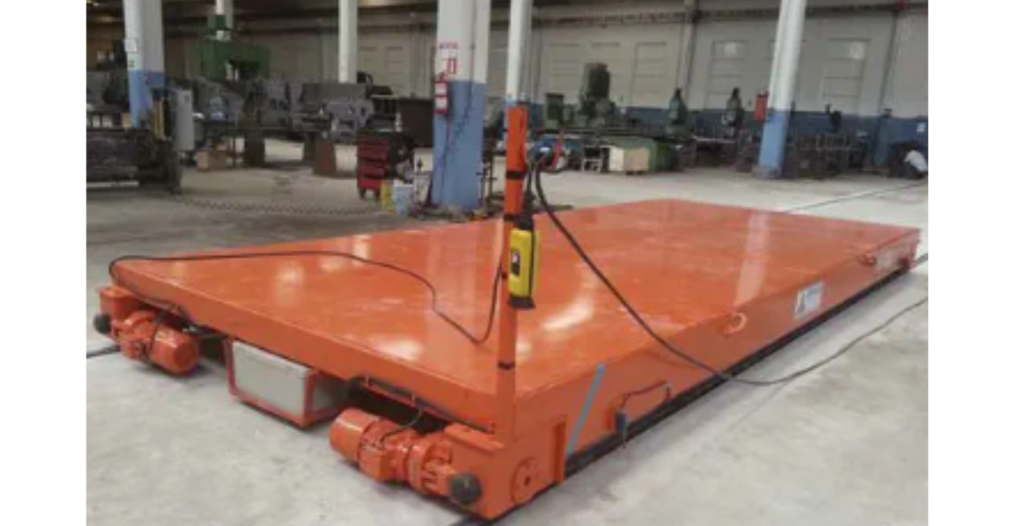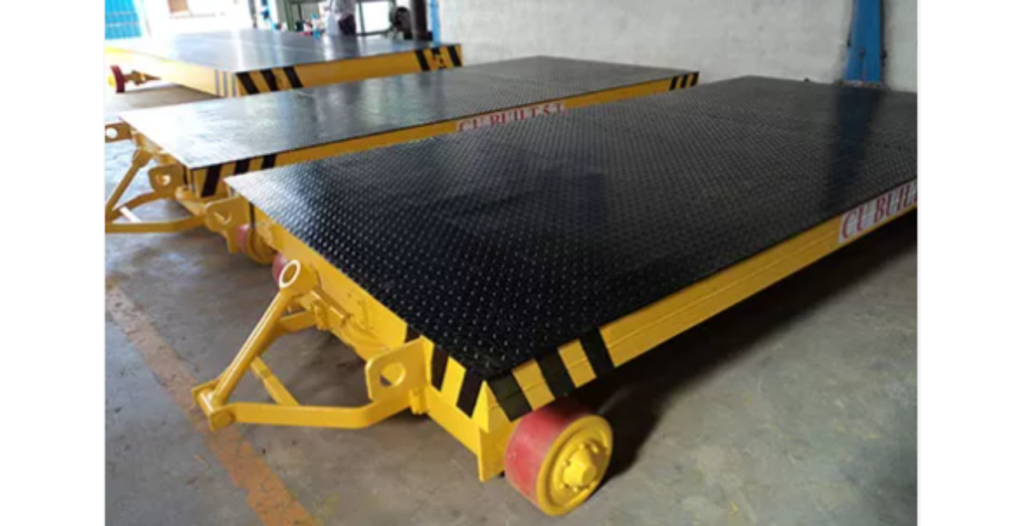CRANES & COMPONENTS TECHNOLOGY & PRODUCTS
Mobile Trolleys
| Mobile Trolleys on the Ground, also known as wheeled trolleys or transport carts, are industrial equipment designed for the manual or motorized movement of heavy loads on the ground or shop floor. These trolleys come in various sizes and configurations, offering a versatile and efficient solution for material handling and transportation within a facility. In this detailed overview, we will discuss the key aspects of mobile trolleys on the ground, including their working principles, advantages, disadvantages, applications, materials of construction (MOC), and provide a summary. |
| 1. Working Principles: Mobile trolleys on the ground operate based on simple mechanical principles. The key working principles include: |
| Wheels: These trolleys are equipped with wheels, typically four or more, that are designed to move smoothly on the ground. The wheels may be casters, which swivel for maneuverability, or fixed for straightforward linear movement. |
| Handle or Push Bar: Manual trolleys usually feature a handle or push bar that allows operators to push or pull the trolley. In motorized versions, the trolley is self-propelled. |
| Load Platform: The load platform, often flat or with rails, is where the load is placed. It can be customized to suit the specific load and application. |
| Power Source (Motorized Trolleys): Motorized trolleys are equipped with an electric motor or other power source to assist with load movement. They may be operated using controls on the trolley or remotely. |

| 2. Advantages: |
| Versatility: Mobile trolleys are highly versatile and suitable for a wide range of loads and applications. |
| Efficiency: They enable efficient material handling and reduce manual labor, improving productivity. |
| Flexibility: These trolleys can navigate through narrow spaces and around obstacles, offering great maneuverability. |
| Ergonomics: Manual trolleys are designed to reduce operator strain and provide ergonomic handling. |
| Cost-Effective: They are often a cost-effective solution for material transportation within a facility. |

| 3. Disadvantages: |
| Load Capacity: The load capacity of mobile trolleys on the ground is limited compared to other material handling equipment like forklifts. |
| Distance Limitation (Manual Trolleys): Manual trolleys require physical effort and are suitable for shorter distances. |
| Power Requirements (Motorized Trolleys): Motorized trolleys require a power source, which may limit their mobility in certain environments. |
| Surface Condition: The condition of the ground or floor can affect the trolley’s ease of movement. |

| 4. Applications: Mobile trolleys on the ground find applications in various industries and settings, including: |
| Warehousing: For moving goods and materials within warehouses and distribution centers. |
| Manufacturing: In production facilities for transporting parts, components, and finished products. |
| Retail: For stock replenishment and order picking in retail environments. |
| Hospitality: In hotels and restaurants for transporting supplies and equipment. |
| Construction: On construction sites for moving tools, materials, and equipment. |
| Healthcare: In hospitals and healthcare facilities for transporting medical supplies and equipment. |
| 5. Materials of Construction (MOC): The materials of construction for mobile trolleys on the ground depend on factors such as load capacity, environmental conditions, and industry-specific requirements. Common materials include: |
| Steel: Steel is often used for the main structural components, providing strength and durability. |
| Aluminum: Used in some applications where weight reduction is critical. |
| Plastic or Composite Materials: These may be used for lighter-duty trolleys to reduce weight and minimize corrosion. |
| 6. Summary: Mobile trolleys on the ground are versatile and efficient industrial equipment used for the manual or motorized movement of heavy loads within a facility. They operate on simple mechanical principles and offer advantages such as versatility, efficiency, flexibility, and cost-effectiveness. However, they have limitations in terms of load capacity, distance, power requirements, and surface conditions. They find applications in warehousing, manufacturing, retail, hospitality, construction, healthcare, and other industries, with materials of construction chosen based on specific requirements and environmental conditions. |


 Sales & Marketing:
Sales & Marketing:  Service Supports:
Service Supports:  Website:
Website: 